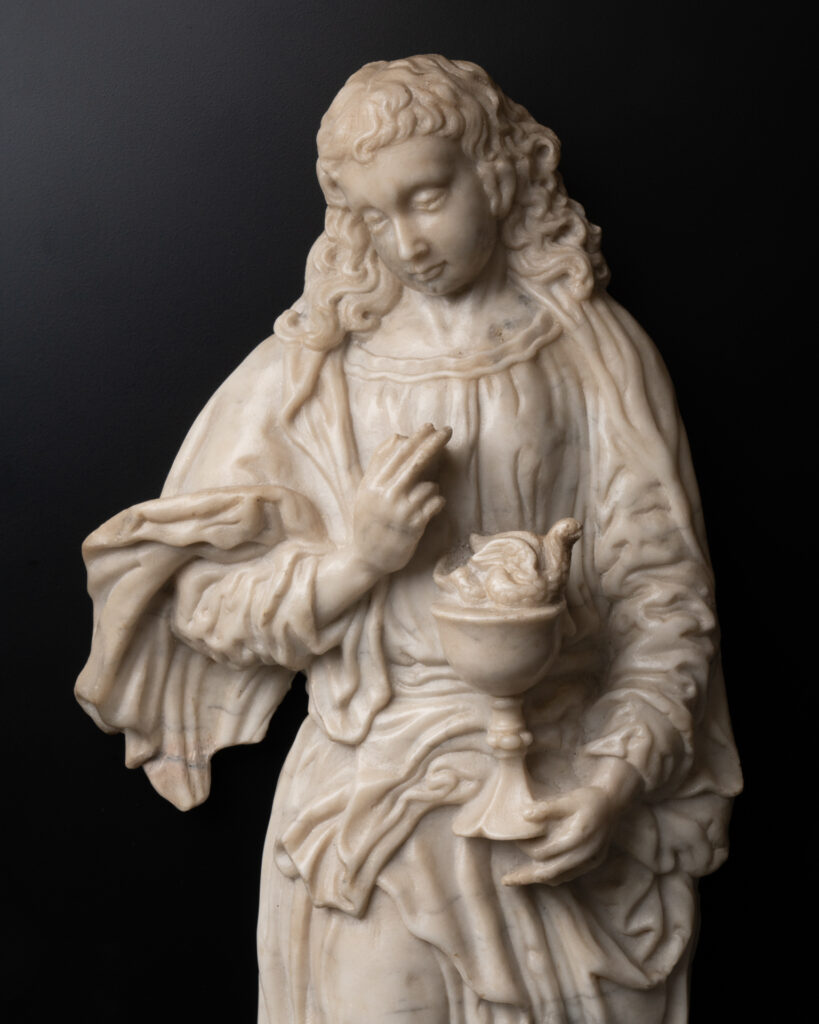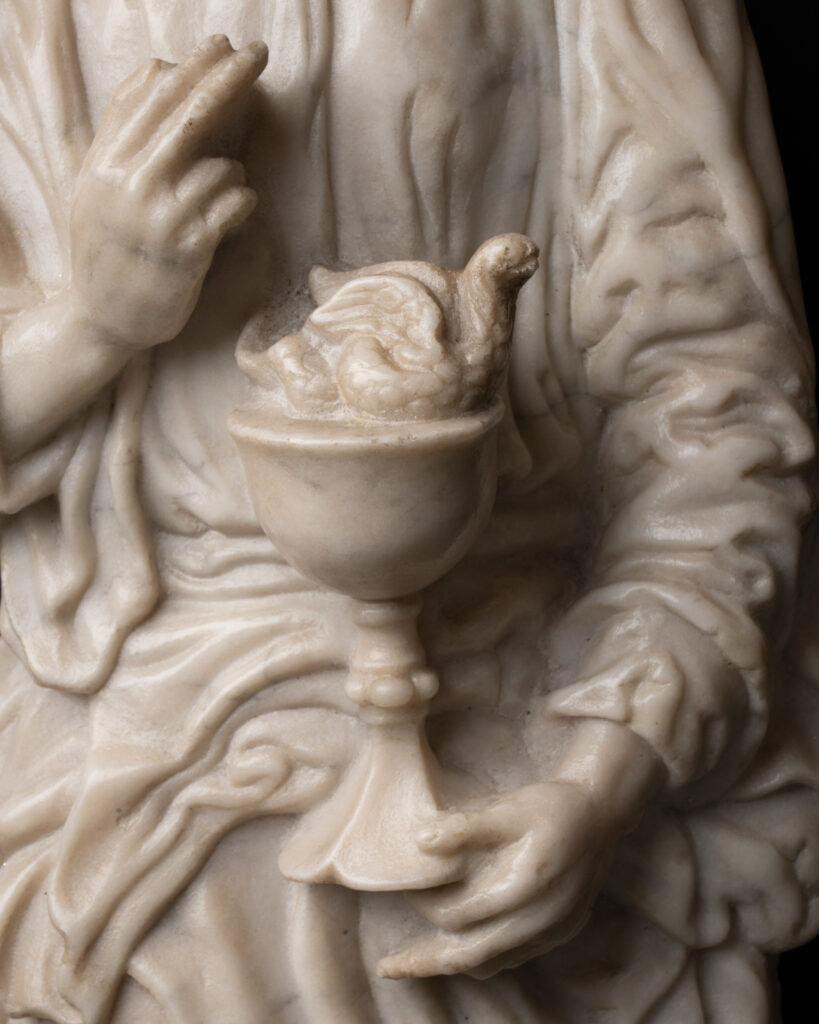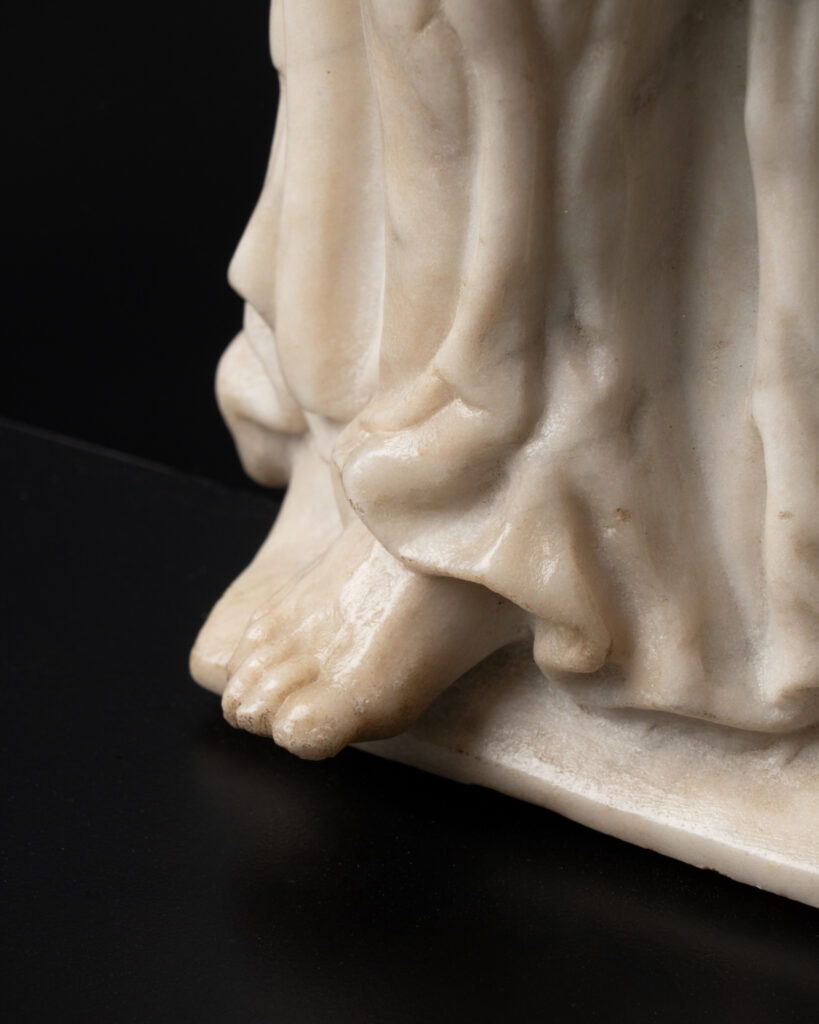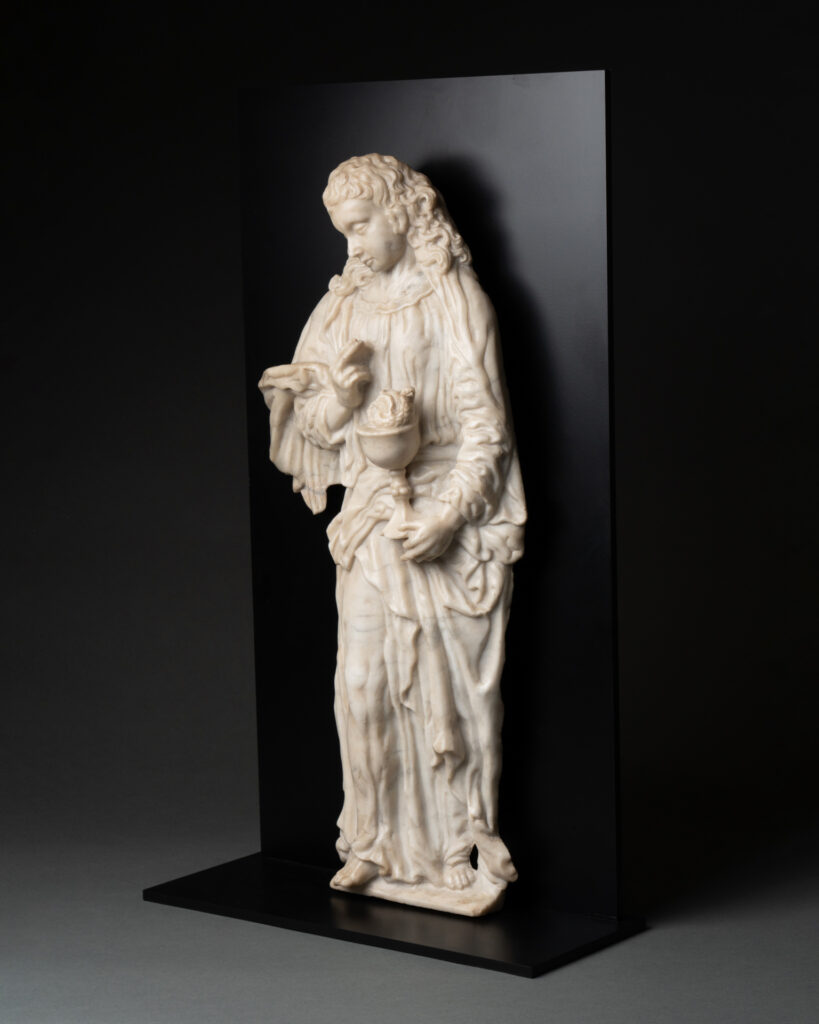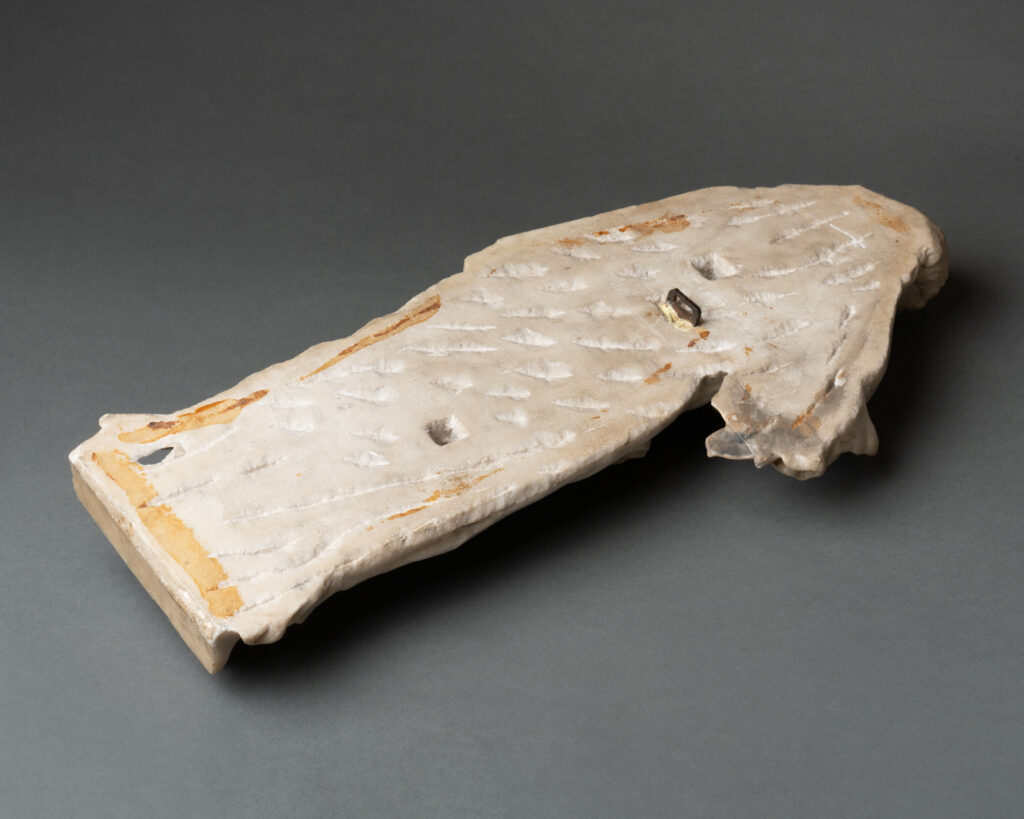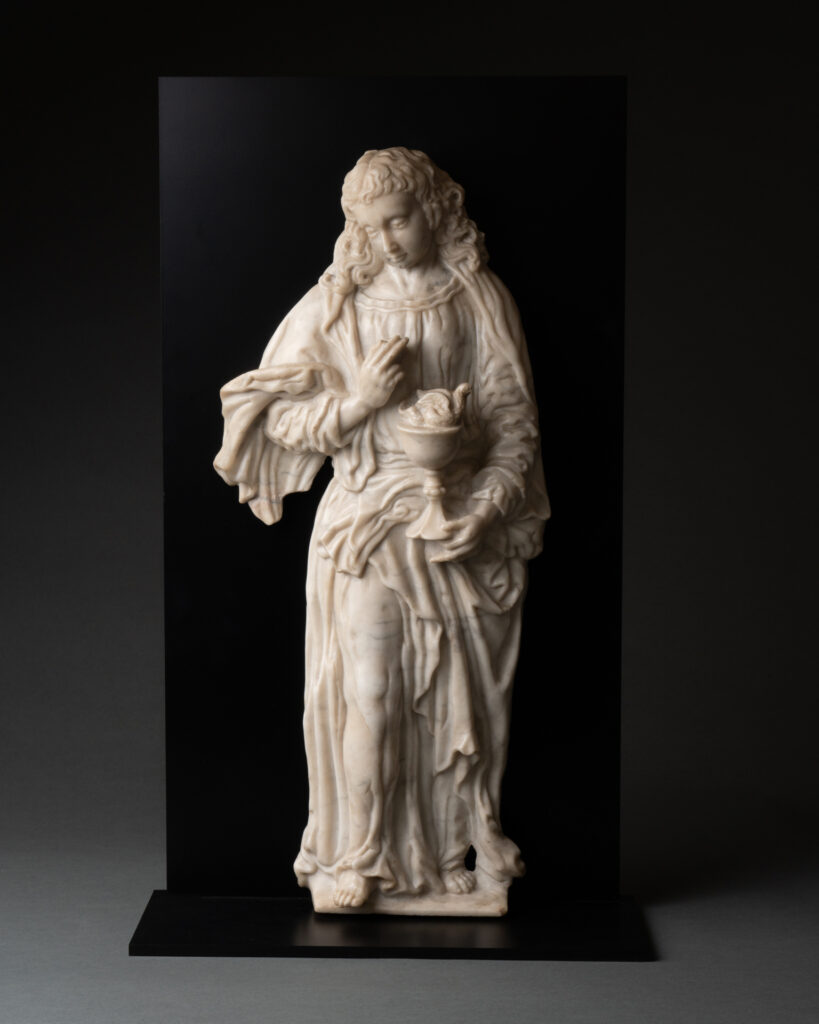This magnificent marble high relief depicts St John the Evangelist carrying a chalice. Dating from the 16th century, the work is close to the Flemish school.
St John is depicted full-length, by a young man with long hair whose thick locks create sinuous shapes.
His head is tilted to the right, looking away from the chalice in his left hand. The Evangelist’s facial features are gentle, conveying a certain serenity. The Saint’s shoulders are covered by a large, flowing cloak, while his long tunic seems to be clinging to his body.
His right hand is raised in a gesture of blessing. His left hand holds the chalice containing a dragon.
Finally, Saint John, in the contrapposto position, moves his right leg forward, highlighted by the flowing drapery, which protrudes from the base, while his left foot remains anchored to it.
This work was sculpted with great delicacy, and particular attention was paid to the folds of the drapery.
The iconography of St John the Evangelist accompanied by the chalice and the serpent or dragon comes from a legendary episode in the life of the saint, recounted by Jacques de Voragine in his Légende Dorée (1261-1266). The episode recounts the ordeal of Saint John, who, put to the test by the high priest of Diana’s temple, is forced to drink poison. Saint John blesses the chalice before drinking the poison, from which a serpent or dragon, symbols of the evil one, emerges and escapes from the chalice.
